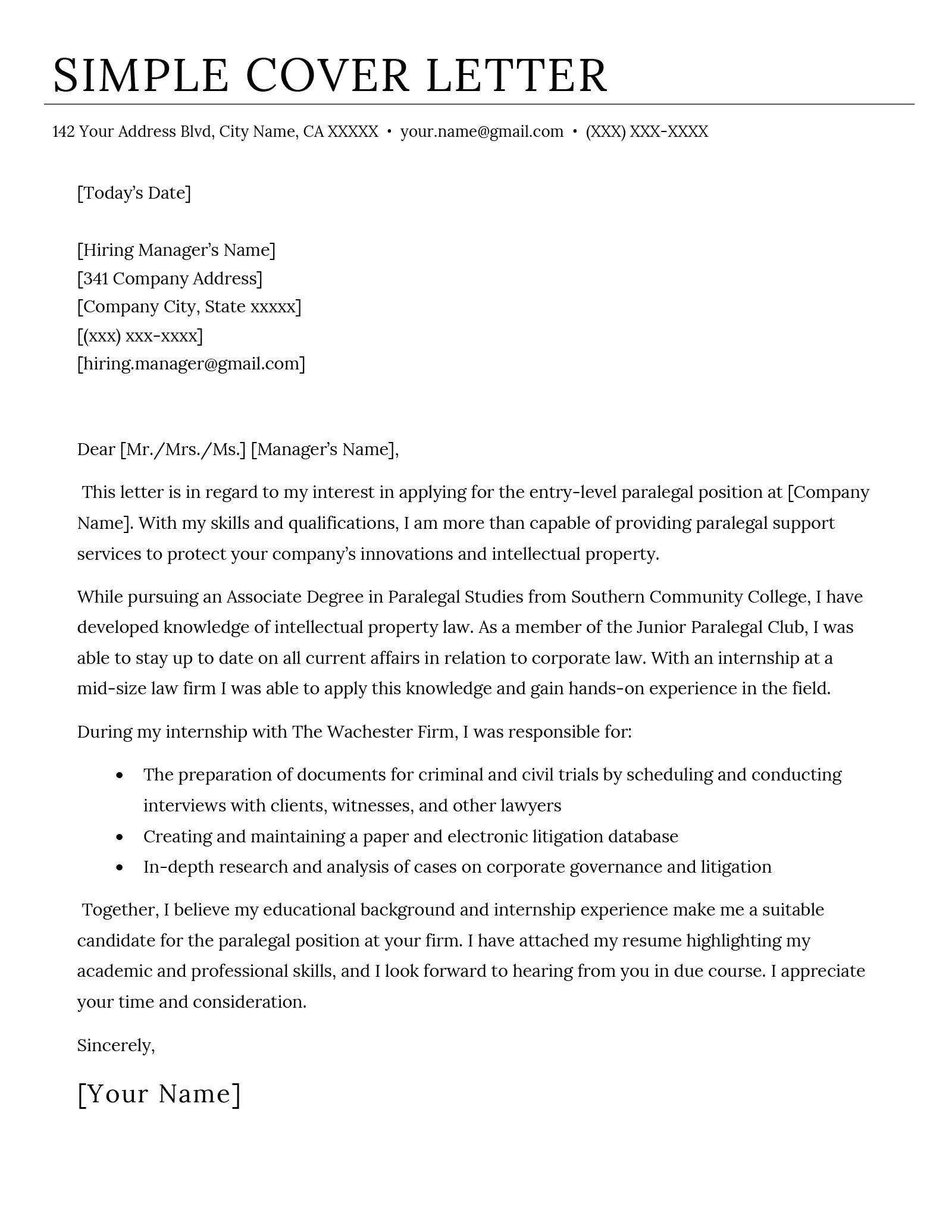Understanding the Importance of Addressing a Cover Letter
Addressing a cover letter correctly might seem like a small detail, but it’s a crucial step that can significantly impact how your application is perceived. It’s the first point of contact, setting the tone for the rest of your letter and the impression you make on the hiring manager. Taking the time to address your cover letter properly demonstrates attention to detail, professionalism, and a genuine interest in the position and the company. In a competitive job market, every aspect of your application matters. A well-addressed cover letter can be the difference between your application being noticed or overlooked. Moreover, it shows that you’ve taken the effort to research the company and the specific role, indicating your proactive approach. This is also a golden opportunity to show that you are not just sending a generic application but rather a personalized message designed for the hiring manager and the company itself.
Why Addressing Matters
Addressing your cover letter with the correct name, or using an appropriate salutation when a name isn’t available, shows respect and consideration for the recipient. It’s a simple way to personalize your application and demonstrate that you care enough to put in the extra effort. Ignoring this step, or worse, using a generic salutation when a specific name is available, can suggest that you’re not genuinely interested in the role or the company. This lack of personalization can easily lead to your application being overlooked, as it indicates a lack of effort on your part. A personalized cover letter immediately captures attention and makes the hiring manager feel valued. When an applicant takes the time to learn the name of the hiring manager, it indicates a proactive approach and a genuine interest in the role, making the applicant stand out from other candidates. Furthermore, a personalized greeting can make the recruiter feel more inclined to read the cover letter thoroughly, increasing the chances of your application being considered.
Impact on Professionalism
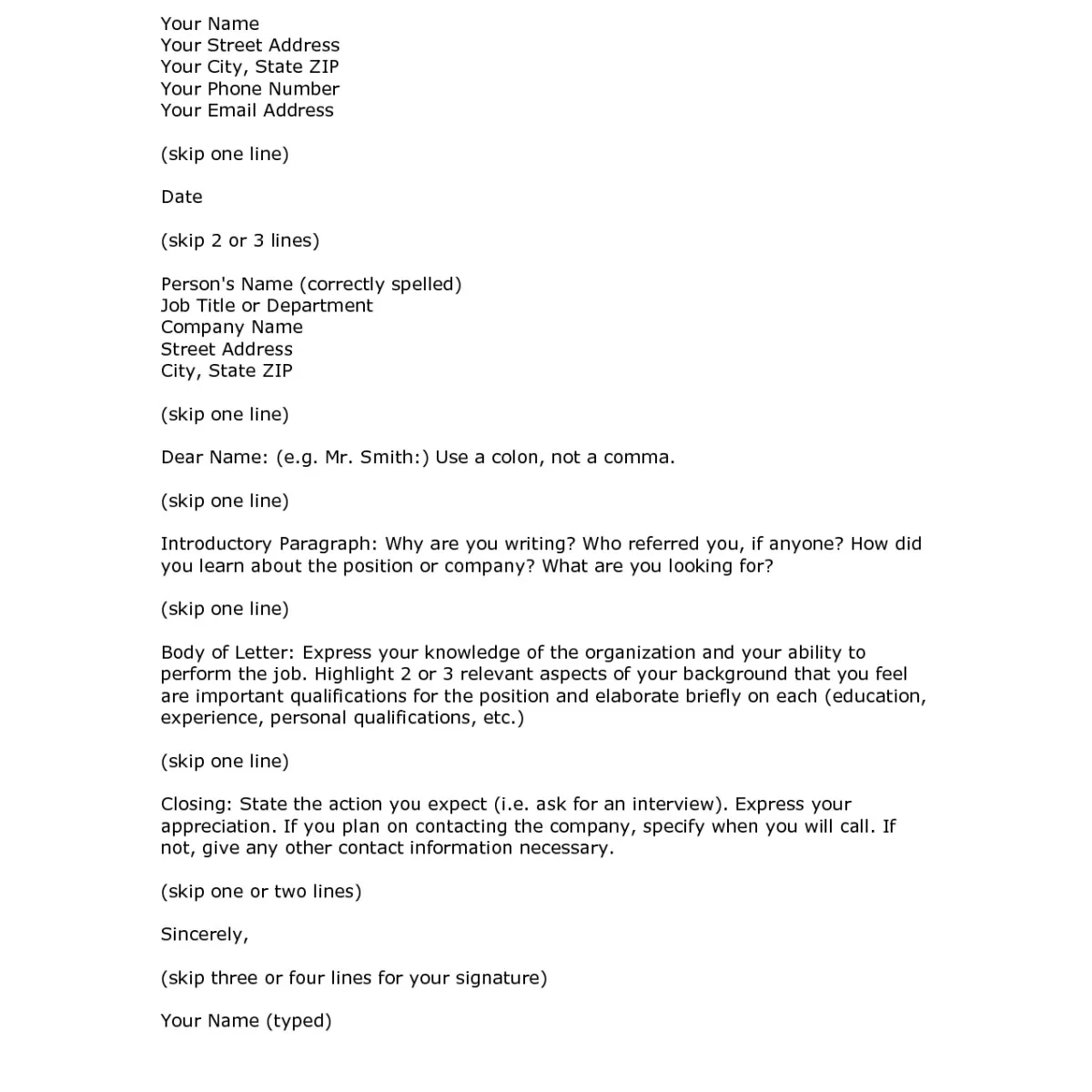
The way you address your cover letter speaks volumes about your professionalism. A properly addressed letter signals that you understand workplace etiquette and have taken the time to present yourself in a polished and respectful manner. A cover letter is a formal document, and its tone should reflect that. Professionalism extends to every detail, including the salutation. Using the correct name and title of the hiring manager immediately establishes a professional tone, showing your respect for their position and the company’s hierarchy. Conversely, using an incorrect title, misspelling the name, or using an overly casual greeting can create a negative impression, undermining your credibility. It can also make the recipient doubt your ability to handle other aspects of professional communication. The professional addressing of your cover letter sends a message that you understand the importance of business communication and its impact on your career. This is a small, yet incredibly important, step in making sure that the hiring manager views your application with respect and attention to detail.
The Dos and Don’ts of Addressing Your Cover Letter
Addressing your cover letter correctly involves several key aspects, and it’s essential to know the dos and don’ts to make a positive impression. Start with a formal greeting, like “Dear Mr./Ms./Mx. [Last Name]”, when you know the hiring manager’s name. Always verify the spelling and title to avoid errors. When the name isn’t available, use a professional alternative, such as “Dear Hiring Manager” or “Dear [Department] Team.” Avoid informal greetings like “Hi” or “Hello.” Always personalize your cover letter, showing you’ve researched the company and the role. Make sure the address is accurate, including the company’s name and the hiring manager’s title. Lastly, proofread the entire letter before submitting to ensure there are no errors. By adhering to these simple guidelines, you can ensure that your cover letter reflects professionalism and attention to detail, increasing your chances of landing an interview. Remember, your goal is to make a positive first impression, and a well-addressed cover letter is a crucial step in that direction.
Using the Hiring Manager’s Name
Whenever possible, address your cover letter to a specific person, preferably the hiring manager. This demonstrates that you’ve done your research and are genuinely interested in the role. Finding the hiring manager’s name adds a personal touch to your application, making you stand out from other candidates. It shows you’ve taken the time to research the company and the position, signaling a higher level of interest. Address the cover letter using the appropriate title (Mr., Ms., Dr., etc.) followed by the person’s last name. For example, “Dear Ms. Smith.” This creates an immediate sense of personalization, making your application feel less generic. Including the hiring manager’s name shows respect for their role and can make your cover letter more engaging, since the hiring manager will feel more connected to the application. Remember to double-check the spelling of the name, and the title to ensure accuracy. Even a small error can make the cover letter feel less professional, so taking the time to verify this detail is essential.
Researching the Hiring Manager

Finding the hiring manager’s name requires a bit of research, but the effort is well worth it. Start by checking the job posting; sometimes, the hiring manager’s name is mentioned directly. If not, visit the company’s website, specifically the “About Us” or “Team” sections, to find the relevant contact. LinkedIn is an excellent resource. Search for the company and the job title to identify potential hiring managers. Look for the person who is listed as the contact or manager. Once you’ve identified a potential candidate, verify their name and title. If you still can’t find the name, consider reaching out to the company’s HR department. Send a brief email asking for the hiring manager’s name. While this may seem like extra work, it demonstrates your initiative and willingness to go the extra mile. By taking these steps, you can transform your cover letter from a generic document into a personalized message that grabs the hiring manager’s attention from the very beginning. This research shows your proactive attitude and can increase your chances of securing an interview.
What if the Name is Unavailable
There will be times when you cannot find the hiring manager’s name. In such situations, don’t fret; there are still professional alternatives you can use. The best option is “Dear Hiring Manager.” This is a safe and professional choice that maintains a formal tone. Alternatively, you can use “Dear [Department] Team” or “Dear [Department] Hiring Committee” if you know the department responsible for hiring. Another option is “Dear [Job Title]”, for example, “Dear Marketing Manager”. While less personal than using a name, it’s more targeted than a general greeting. Avoid overly casual greetings like “Hi” or “Hello”, as these can undermine your professionalism. Remember to always maintain a respectful and professional tone. If you’ve exhausted all other options and still can’t find a name, these alternatives are perfectly acceptable and will allow you to maintain a professional tone, showing you’ve put in effort to personalize your application.
Using a Generic Salutation
When you can’t find the hiring manager’s name, choosing a generic salutation is acceptable. The key is to select the most appropriate one to maintain professionalism. “Dear Hiring Manager” is the most common and recommended choice. This greeting is professional and indicates that you’ve made an effort to find a specific contact. Other options include “Dear [Department] Hiring Committee” or “Dear [Job Title]” if you know the department or the specific role overseeing the hiring process. These choices are better than a completely generic greeting. While these options are less personal than using a name, they still demonstrate your awareness of the job and the department. Avoid overly casual greetings like “Hi” or “Hello”, as they can make your cover letter seem less formal and less professional. Stick to the options mentioned to ensure a positive and professional first impression. Even without a specific name, the right generic greeting can make a good impression.
Formatting Your Cover Letter Address
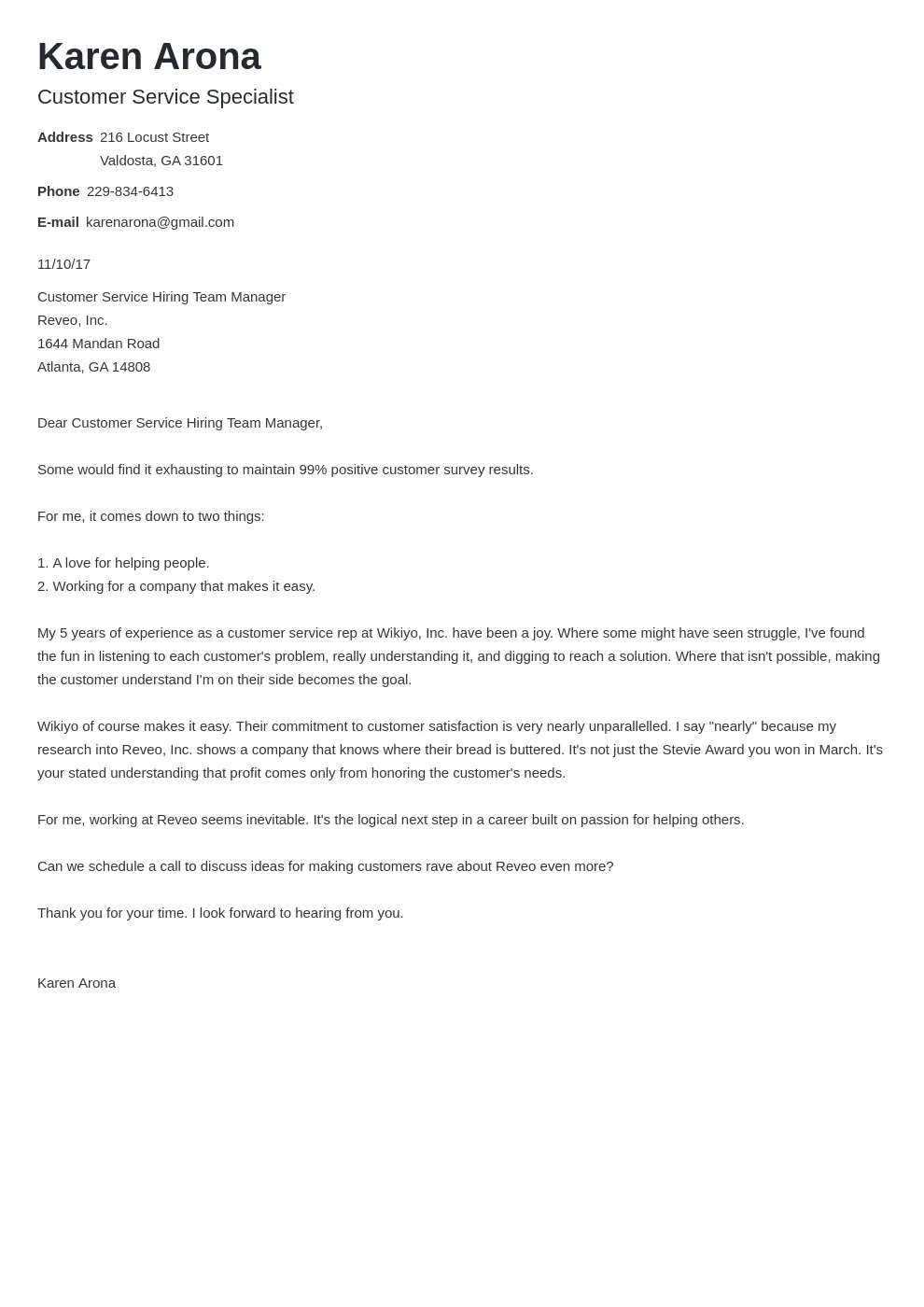
The way you format the address section of your cover letter plays a vital role in creating a professional first impression. Begin by placing the address at the top of the document, typically in the upper left or right corner. This placement follows conventional business letter formatting and ensures that the information is easily accessible to the recipient. Below the address, include the date, followed by the hiring manager’s name, title, and the company’s address. Use a professional font, such as Times New Roman, Arial, or Calibri, and maintain a font size between 10 and 12 points for readability. Ensure consistent formatting throughout the letter. When addressing the hiring manager, use the correct title (Mr., Ms., Dr., etc.) and double-check the spelling of their name. Use single spacing within each paragraph, but add a blank line between paragraphs for improved readability. A well-formatted address shows that you pay attention to detail, which is a vital skill in any job. By adhering to these formatting guidelines, you demonstrate your professionalism and enhance the overall quality of your cover letter.
Placement of the Address
The placement of the address in your cover letter is important for ensuring that it’s easy to read and looks professional. Typically, the address should be at the top of the letter, either in the upper left or right corner. The choice between the left or right alignment often depends on personal preference or company style guidelines. Below your address, include the date. Then comes the hiring manager’s name, title, and company address. This structured layout makes the address clear and easy to find. Keep the formatting consistent, using the same font and size as the rest of the letter. Proper placement of the address section ensures that your cover letter maintains a professional appearance, which is crucial in any job application. Make sure that the address does not interfere with the other content of the cover letter and remains well-organized. Also, make sure you follow any specific instructions provided by the employer, especially for online applications. By paying attention to these details, you present yourself as organized and professional, increasing the likelihood of a positive first impression.
Font and Style Guidelines
The font and style you choose for your cover letter play a subtle but important role in creating a professional presentation. Stick to standard, easy-to-read fonts like Times New Roman, Arial, or Calibri. These fonts are widely recognized and ensure that your letter is clear and legible. The recommended font size is between 10 and 12 points. This size is ideal for readability without being too large or too small. Maintain consistent formatting throughout the entire letter. Use the same font, size, and style for all sections, including the address, body paragraphs, and closing. This consistency contributes to a polished and professional appearance. Use single-spacing within paragraphs and double-spacing between paragraphs to improve readability. Avoid using overly decorative or unusual fonts, as they can distract from your message. The goal is to make your cover letter easy to read and visually appealing. By following these font and style guidelines, you can ensure that your cover letter looks professional and presents you in the best possible light. Choosing appropriate formatting options highlights your attention to detail, an important characteristic in any workplace.
Best Practices for Different Scenarios
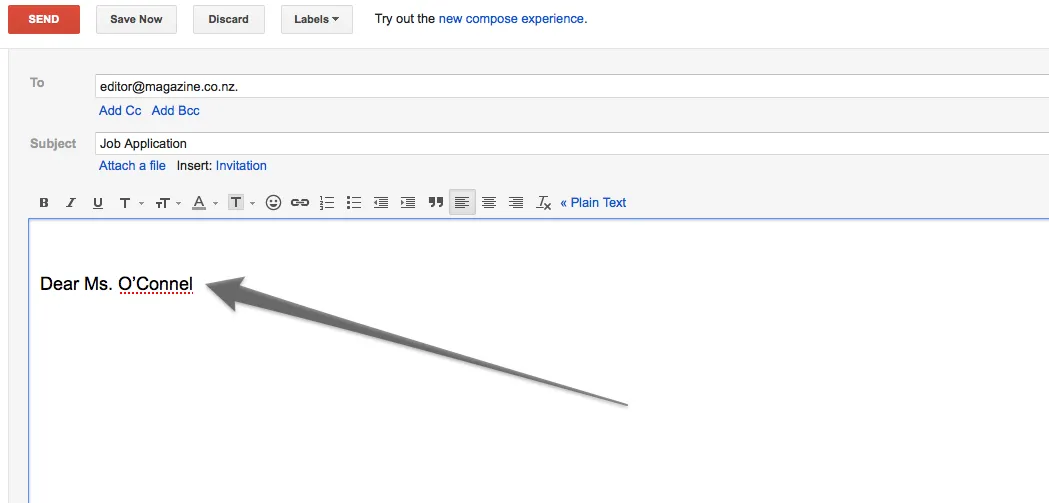
Adapting your cover letter addressing to different scenarios shows your adaptability and attention to detail. For online applications, check the application instructions for specific guidelines. If the name is unavailable, use “Dear Hiring Manager” or “Dear [Department] Team.” When applying for a specific department, tailor the greeting to the department’s name. If you know someone at the company, mention their name in the opening, but only if it’s appropriate. In online applications, ensure that the formatting is clean and easy to read. Always review the application instructions carefully for guidance on salutations or required fields. For applications where you know someone, it’s important to mention that person’s name in a professional and appropriate manner. Adapt your greeting to reflect this connection, like “Dear Mr. [Last Name], as recommended by [Name].” In the case of a department, it’s often better to directly address the department instead of the hiring manager if the name is not known. A well-adapted cover letter shows that you understand the details and the specific needs of each application, increasing your chances of making a good first impression. Tailoring the salutation demonstrates your commitment to the job application process and signals your attention to detail.
Addressing a Cover Letter for Online Applications
Addressing your cover letter for online applications requires a slightly different approach than traditional mail. Because these applications often lack specific instructions, it is imperative to focus on professionalism and clarity. If the job posting provides a contact person, use their name and title. If not, use “Dear Hiring Manager” or “Dear [Department] Team.” Pay close attention to the formatting. Keep the address section concise and professional, using a standard font like Arial or Times New Roman. Make sure the text is clear and easy to read on a screen. Proofread the letter carefully before submitting it. Avoid any typos or grammatical errors. Adhere to any specific instructions provided by the employer. Some online application systems may have specific fields for addresses. Ensure that your cover letter complements the online application, not contradicting any instructions. By following these best practices, you will ensure your application is polished, professional, and ready to make a positive impression online. Using these tips will ensure that your application stands out and increases your chances of moving forward in the hiring process.
Addressing a Cover Letter for a Specific Department
When applying for a position within a specific department, tailoring your cover letter addressing to that department can demonstrate your understanding of the role and company structure. If you have the hiring manager’s name, start with a standard greeting like “Dear Mr./Ms./Mx. [Last Name].” If not, use “Dear [Department] Hiring Manager” or “Dear [Department] Team.” For example, if applying to the Marketing Department, you might use, “Dear Marketing Department Hiring Manager.” This personalization shows that you’ve researched the company and understand its internal structure. Also, it indicates a keen interest in the specific department. Ensure that the department name is accurate and up-to-date. Double-check the spelling and formatting to avoid any mistakes. By customizing your cover letter in this way, you demonstrate your attention to detail and your commitment to the application process. This helps make your cover letter stand out from the others. Tailoring your approach to the department indicates that you have a genuine interest in the company and the position.
Addressing a Cover Letter When You Know Someone
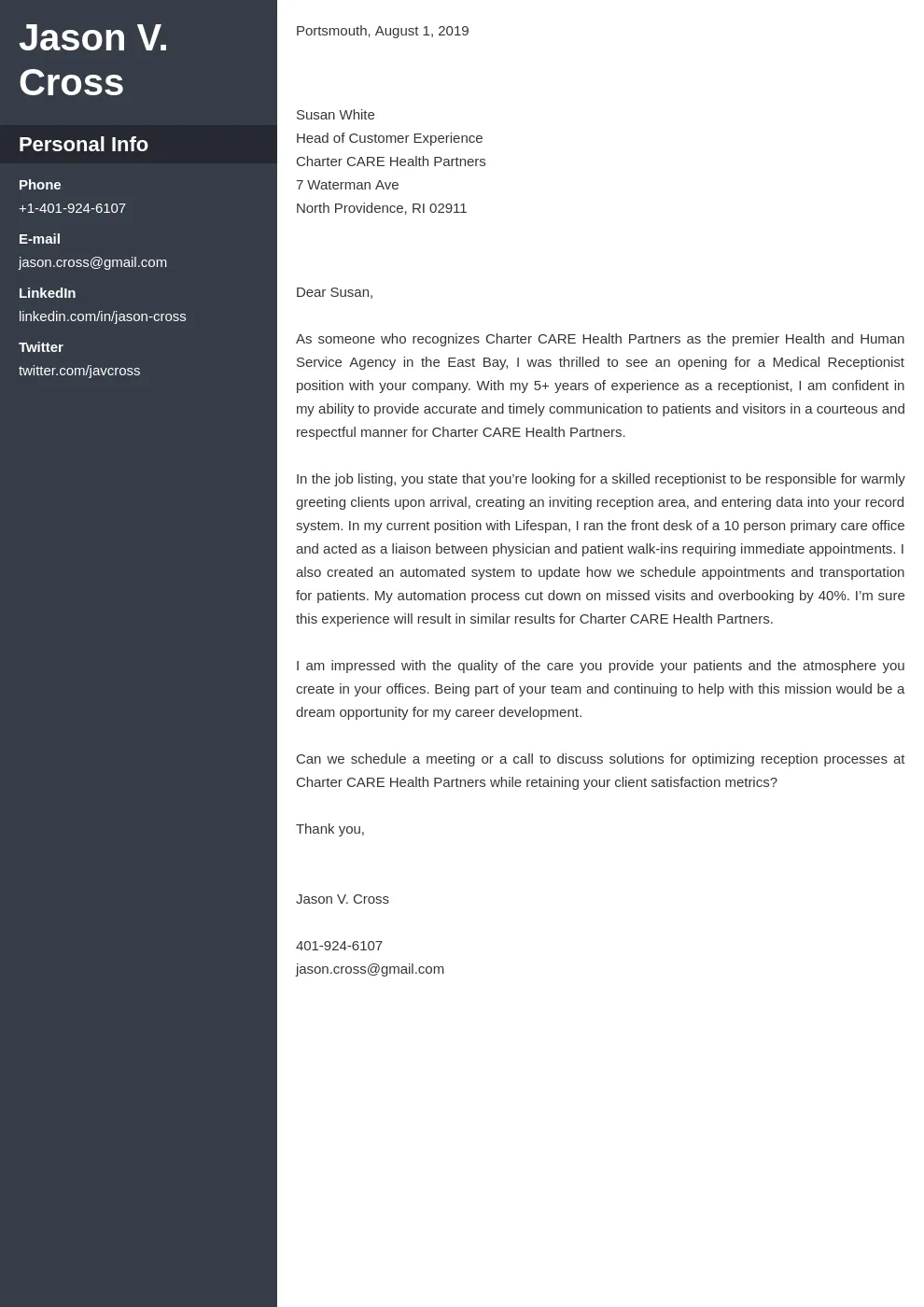
When you know someone at the company, strategically including their name in your cover letter can add a personal touch and boost your application. However, it is essential to do this in a professional way. If you were referred by someone, start your cover letter with a greeting such as, “Dear Mr./Ms./Mx. [Last Name], as recommended by [Name].” Ensure that you have the referral’s permission before mentioning their name. This shows that you were referred and highlights your connection to the company. If you know the hiring manager personally, it is also acceptable to use their name, but always maintain a professional tone. Ensure that your mention of the contact is appropriate, and in line with company guidelines. This approach can help you to stand out from other candidates by providing a level of personalization that generic applications lack. However, always avoid being overly familiar or using informal language. Using a professional greeting, and maintaining a tone that aligns with company guidelines, will ensure your cover letter makes a positive impression.
Common Mistakes to Avoid
To make sure your cover letter makes a positive impression, it’s essential to avoid common mistakes. One of the biggest errors is misspelling the hiring manager’s name or using the wrong title. Always double-check for accuracy. Another is using outdated titles, such as “Mr.” for a woman. Using an incorrect or outdated title can show a lack of attention to detail. Avoid being too casual or using overly informal greetings like “Hi” or “Hey.” Using casual language can hurt your professionalism. Additionally, don’t ignore company culture. Tailor your tone and language to align with the company’s style. Avoid generic cover letters. Each cover letter should be tailored to the specific job and the company. Be sure not to use excessive jargon, as this might not be understood by the hiring manager. By avoiding these mistakes, you can make your cover letter shine and stand out from other applicants. Proper addressing and attention to detail demonstrate your respect for the hiring manager and the company, increasing your chances of securing an interview.
Spelling Errors and Typos
Spelling errors and typos in your cover letter can undermine your credibility and leave a negative impression. Always thoroughly proofread your cover letter to catch any mistakes before submitting it. Misspelled names or titles can suggest a lack of attention to detail, or that you are not taking the application seriously. Carefully review the hiring manager’s name and company address to ensure accuracy. If possible, ask a friend or family member to proofread your cover letter. A fresh pair of eyes can easily spot errors that you might have missed. Use spell-checking tools, but don’t rely on them entirely. These tools may not always catch context-based errors. Proofreading is essential for making sure that your application reflects well on you, your skill and your attention to detail. Moreover, carefully checking your work also indicates your respect for the hiring manager’s time and attention.
Using Outdated Titles
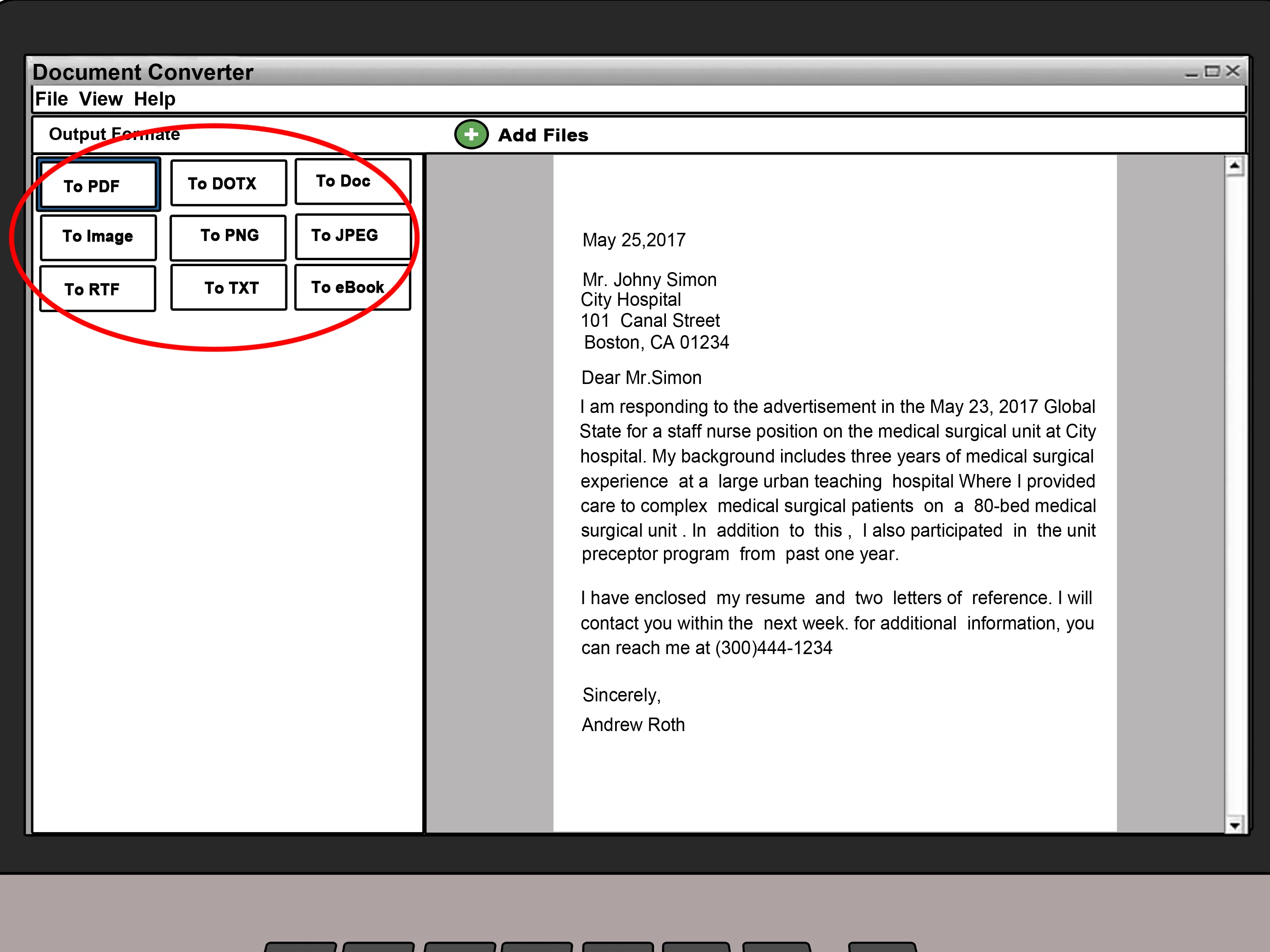
Using outdated titles in your cover letter can be a major misstep, and it’s crucial to stay informed. Titles like “Mr.” and “Ms.” are common, but using them incorrectly, or using outdated terms, shows a lack of attention to detail. Ensure that you know the hiring manager’s preferred title. If you’re unsure, use “Mx.” or simply use their full name. This approach is especially important in today’s workplace, where inclusivity and respect are highly valued. Avoid making assumptions based on someone’s gender. When in doubt, it’s best to err on the side of caution by either using a gender-neutral title or the full name. Being up-to-date on these matters shows your respect for the hiring manager. Showing that you value inclusion will ensure that your cover letter creates a positive impression, reflecting that you’re a thoughtful and considerate professional.
Ignoring Company Culture
Ignoring company culture in your cover letter can result in a poor impression, potentially causing you to miss out on a job. Research the company to understand its values, mission, and communication style. Tailor your tone to align with the company’s personality. For instance, if the company has a more casual culture, it may be acceptable to use a slightly less formal tone in your cover letter. However, always maintain professionalism. If the company culture is formal, stick to a more traditional and respectful tone. Understand the company’s values. Many companies have a mission statement on their website. Use language that reflects their values. By understanding the company’s culture, you can ensure that your cover letter aligns with the company’s brand, and this can help you stand out from the crowd. Research is key, as understanding the culture shows that you take the time to create a good fit with the company, and that you have a genuine interest in the role.
Final Thoughts and Key Takeaways
Addressing your cover letter correctly is a small but critical step in the job application process. It demonstrates attention to detail, respect for the hiring manager, and a commitment to professionalism. Remember to always personalize your cover letter whenever possible. Always verify the hiring manager’s name and title, or use an appropriate alternative if you can’t find the information. Avoid common mistakes, such as spelling errors, outdated titles, and ignoring company culture. By following the guidelines and best practices outlined in this article, you can ensure that your cover letter makes a positive first impression, increasing your chances of getting noticed by the hiring manager. In the competitive job market, every detail counts. Taking the time to address your cover letter properly shows that you are committed to excellence. Make sure your letter gets you noticed for the right reasons, and your chances of landing an interview will increase significantly. Remember, the perfect cover letter starts with a perfect address.
